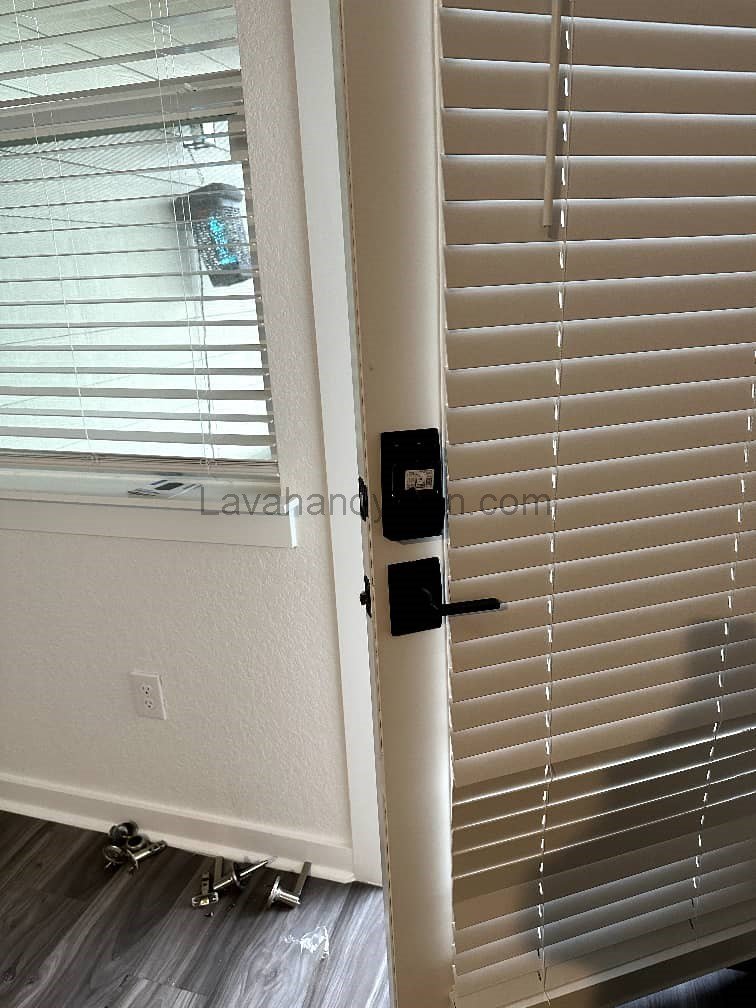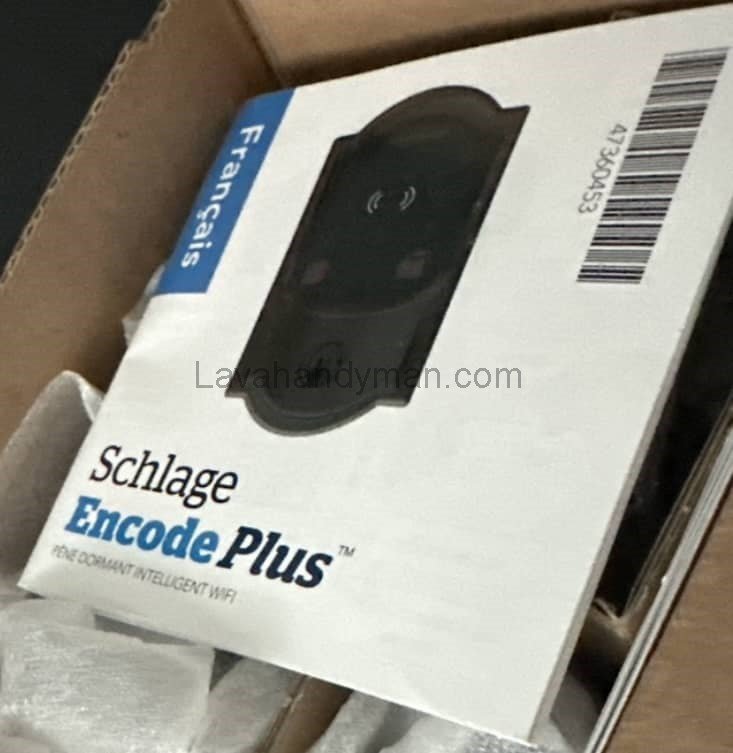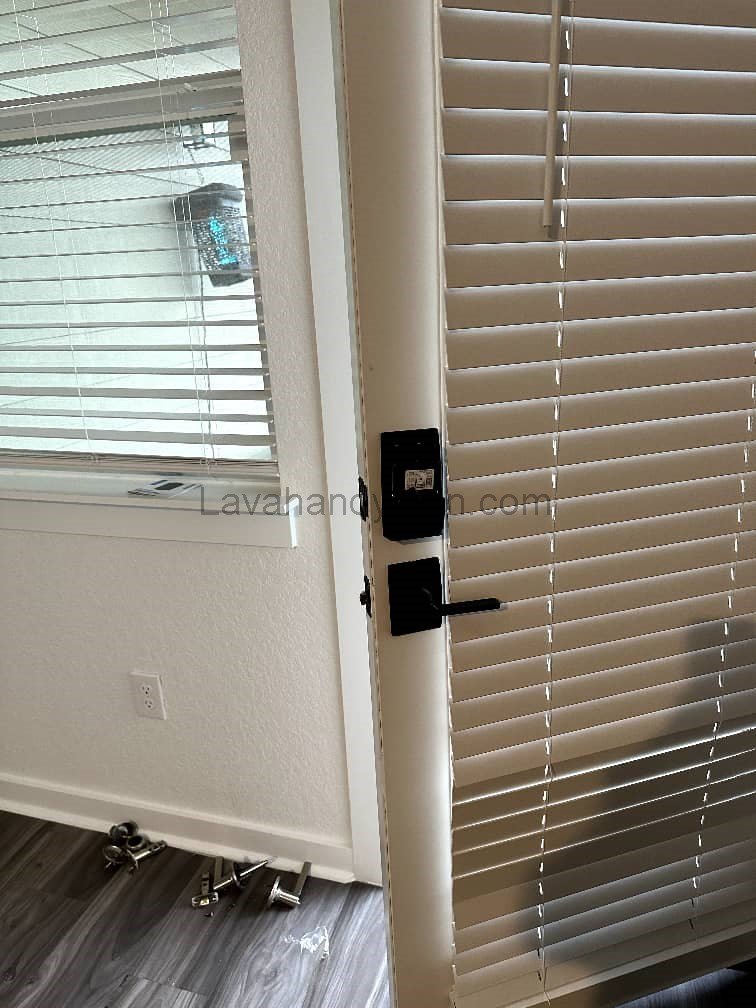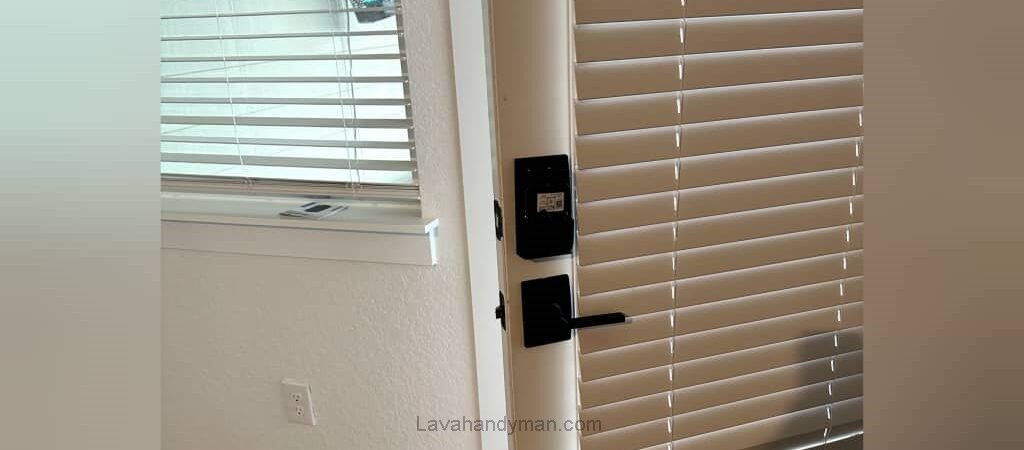Installing a Smart Lock on Your Home Door | Complete Guide
Introduction
In today’s world, home security is more important than ever. Smart locks have replaced traditional locks, offering both enhanced security and convenience. These locks can be controlled via passwords, fingerprints, cards, Bluetooth, or mobile apps.
This article provides a comprehensive guide on choosing, installing, maintaining, and using a smart lock, so you can easily enhance your home’s security.

Section 1: Understanding Smart Locks
What is a Smart Lock?
A smart lock is an electronic device that replaces a traditional lock, allowing you to control access remotely or locally.
Types of Smart Locks
- Keypad Lock: Unlocks by entering a password.
- Biometric Lock: Uses fingerprints to identify authorized users.
- Card Lock: Opens with RFID or NFC cards.
- Bluetooth / Wi-Fi Lock: Controlled via mobile app or internet.
- Combination Lock: Uses multiple access methods for added security.
Applications
- Home and apartment entry doors
- Office rooms and restricted areas
- Private rooms and important areas within the home
Section 2: Advantages and Disadvantages
Advantages
- High security and precise access control
- Remote locking and unlocking
- Keyless operation reduces the risk of theft
- Access logs for tracking who enters
- Integration with smart home systems
Disadvantages
- Requires batteries or power source
- Higher cost compared to traditional locks
- Some features depend on internet connectivity
- Risk of hacking if software is not secure
Section 3: Tools and Equipment Needed
- Electric drill with suitable bits
- Screwdrivers and lock-specific screws
- Measuring tape and ruler
- Pencil or marker for marking drill points
- Pliers and wire cutter
- Batteries (if required)
- Smart lock user manual
Section 4: Step-by-Step Installation
1. Prepare the Door
- Ensure the door and frame are in good condition
- Remove old locks and clean the installation area
2. Choose the Installation Location
- Check door thickness and material compatibility
- Ensure easy access to batteries and sensors
3. Mark Drill Points
- Use a ruler and pencil to mark screw holes and latch positions
- Ensure the handle and latch align with the frame
4. Drill Holes
- Drill holes at the marked points with the correct drill bit
- Ensure hole size matches the lock specifications
5. Install the Latch
- Place the latch in its designated spot and secure it with screws
- Check that it moves freely without sticking
6. Install the Lock Body
- Attach the interior and exterior lock units according to instructions
- Connect wires to designated ports if applicable
7. Mechanical Test
- Open and close the door several times
- Ensure the latch and handle operate smoothly
8. Electronic Setup
- Insert batteries and power on the lock
- Program passwords, fingerprints, or cards
- Sync with mobile app if available
9. Final Test
- Test multiple access methods: password, fingerprint, mobile app
- Ensure all features function correctly
Section 5: Safety Tips
- Use high-quality batteries
- Do not share passwords or fingerprints with unauthorized individuals
- Keep the lock software updated
- Choose locks from brands with verified security standards
- Avoid tampering with a malfunctioning lock; contact support
Section 6: Maintenance
- Check and replace batteries every 6–12 months
- Clean the lock surface and keypad with a soft cloth
- Ensure screws and latch are tight
- Regularly review security settings on smart locks connected to the internet
Section 7: Costs
- Lock price: $30 to $300+ depending on brand and model
- Professional installation: $10–$50 (varies by region)
- Maintenance cost: Battery replacement every 6–12 months
- Economic benefit: Reduces theft and property damage risk
Section 8: Buying and Installation Recommendations
- Choose a reputable brand with warranty and after-sales support
- Select an access method suitable for your lifestyle
- Ensure compatibility with door thickness and material
- Check additional features: remote access, integration with smart home systems
- Use a professional installer for proper and secure setup
Complete Guide to Installing a Smart Lock on Your Home Door
Smart locks combine security and convenience in a single device, replacing traditional locks. Proper installation requires following detailed steps and using the right tools. This guide provides a step-by-step, practical approach to installing a smart lock.
Tools and Equipment Needed
Before starting, prepare the following tools:
- Electric drill with appropriate drill bits (wood, metal, or UPVC)
- Screwdrivers and screws included with the lock
- Measuring tape and ruler for precise measurements
- Pencil or marker for marking drill points
- Pliers and wire cutter (if needed)
- Batteries according to the lock’s instructions
- Smart lock user manual
Safety Tip: Ensure the door and frame are solid and in good condition before installation.
Step 1: Prepare the Door
- Remove the Old Lock:
- Unscrew and remove any existing lock and latch.
- Ensure the surface is flat and free of debris.
- Clean the Installation Area:
- Wipe the door surface to remove dust and dirt for smooth installation.
Step 2: Choose the Installation Location
- Check door thickness and material (usually 3.5–5 cm is suitable).
- Ensure easy access to batteries, keypad, and sensors.
- For Bluetooth or Wi-Fi locks, confirm good signal reception.

Step 3: Mark Drill Points
- Use a ruler and pencil to mark the positions of screws, latch, and handle.
- Ensure the latch aligns perfectly with the door frame for smooth operation.
- Position keypads or sensors at a comfortable height for easy access.
Step 4: Drill Holes
- Drill holes at the marked points using the appropriate drill bit.
- Ensure hole sizes match the lock’s specifications for easy body installation.
Step 5: Install the Latch
- Insert the latch into its designated spot and secure it with screws.
- Mechanical Test: Make sure the latch moves freely without sticking.
Step 6: Install the Lock Body
- Exterior Unit:
- Includes the keypad, fingerprint scanner, or card reader.
- Connect any wires to the designated ports.
- Secure the unit with screws.
- Interior Unit:
- Houses the battery compartment and motor.
- Ensure proper electrical connections are made.
Step 7: Mechanical Test
- Open and close the door several times before powering the lock.
- Ensure the latch and handle operate smoothly without obstruction.
Step 8: Electronic Setup
- Install the batteries and power on the lock.
- Program passwords, fingerprints, or access cards.
- Sync the lock with a mobile app if available.
Step 9: Final Test
- Test all access methods: password, fingerprint, card, and mobile app.
- Verify that the lock functions smoothly and reliably in all modes.
Safety Tips
- Use high-quality, recommended batteries.
- Do not share passwords or fingerprints with unauthorized users.
- Keep the lock’s software up to date for maximum security.
- Choose locks from reputable brands with certified security standards.
- Do not tamper with the lock if it malfunctions; contact support instead.
Maintenance and Care
Regularly review security settings on smart locks connected to the internet.
Check and replace batteries every 6–12 months.
Clean the lock surface and keypad with a soft cloth.
Inspect screws and latch regularly to prevent loosening.
Types of Smart Locks and Their Applications
Smart locks are modern security solutions that replace traditional keys and offer various ways to lock and unlock doors. Here’s a detailed look at the most common types of smart locks and their features:
1. Keypad Lock
- Access Method: Entering a password.
- Advantages: Convenient, keyless, and suitable for daily use.
- Applications: Home entrances, apartments, and small offices.
- Security Tip: Change passwords periodically to maintain security.
2. Biometric Lock
- Access Method: Using fingerprint recognition for authorized users.
- Advantages: High security and eliminates the need for keys or cards.
- Applications: Homes, office rooms, and high-security areas.
- Security Tip: Fingerprints should be registered accurately for proper lock operation.
3. Card Lock
- Access Method: Using RFID or NFC cards.
- Advantages: Fast, easy, and allows group management of users.
- Applications: Hotels, offices, and public buildings.
- Security Tip: Cards should be properly programmed and managed.
4. Bluetooth or Wi-Fi Lock
- Access Method: Controlled via mobile app or internet.
- Advantages: Remote lock/unlock and access log monitoring.
- Applications: Smart homes, villas, and modern offices.
- Security Tip: Internet or Bluetooth connection is necessary for full functionality.
5. Hybrid Lock
- Access Method: Combination of password, fingerprint, and card.
- Advantages: High security and flexible access options.
- Applications: Areas requiring precise access control.
- Security Tip: All systems must be properly configured to ensure full synchronization.
Choosing the Right Smart Lock for Different Types of Doors
Selecting the right smart lock depends on the material, thickness, and installation location of the door. Here’s a guide to the best types of smart locks for various doors:
1. Wooden Doors
- Suitable Locks: Keypad, biometric, card, or hybrid locks
- Reasons:
- Easy installation with standard screws and drill
- Flexible placement for latch and lock body
- Can support heavier locks
2. Metal Doors
- Suitable Locks: Keypad, biometric, or Bluetooth/Wi-Fi locks with sturdy construction
- Reasons:
- Requires a strong motor for heavy latch operation
- Installation with metal drill bits and screws
- Higher physical security
3. UPVC / PVC Doors
- Suitable Locks: Lightweight Bluetooth, keypad, or biometric locks
- Reasons:
- UPVC doors have limited strength, requiring lighter locks
- Use specialized screws and drill bits for UPVC
- Installation without damaging the frame
4. Glass Doors
- Suitable Locks: Card or Bluetooth locks designed for glass, using metal mounts or industrial adhesive
- Reasons:
- Glass cannot be drilled or screwed
- Lightweight locks with minimal pressure are needed
- Mounted using brackets or strong adhesive
5. Security / Anti-Theft Doors
- Suitable Locks: Biometric, hybrid, or Bluetooth locks with heavy-duty construction
- Reasons:
- Motor must handle heavy latches
- High software security and anti-hacking features are essential
- Combination access methods increase security
Summary
- Wooden Doors: Most types of smart locks are suitable
- Metal Doors: Strong locks with powerful motors
- UPVC / PVC Doors: Lightweight locks suitable for non-metal doors
- Glass Doors: Lightweight locks with mounts or adhesive
- Security/Anti-Theft Doors: Biometric or hybrid locks with high security
Conclusion
A smart lock combines security and convenience in one device. With proper installation, regular maintenance, and selecting a reliable brand, you can enjoy a safe, modern, and keyless home experience. Smart locks not only replace traditional keys but also make daily life easier with their advanced features.
📞 Need Help?
Let us take care of the hard work while you sit back and relax.
📍 Serving: Austin, Round Rock, Cedar Park & more
📱 Call or Text: (737) 420-6992
🌐 Visit: https://lavahandyman.com


